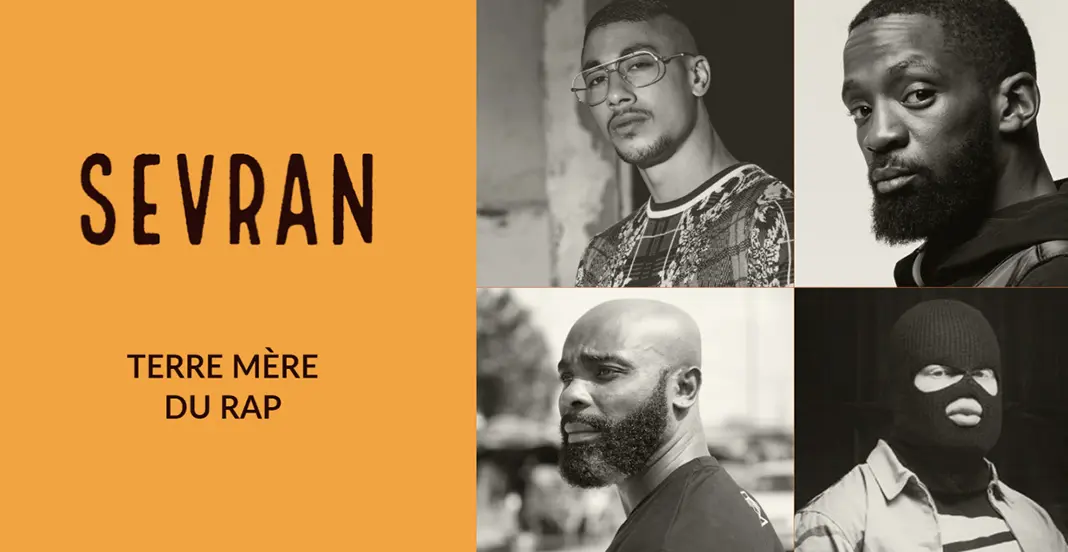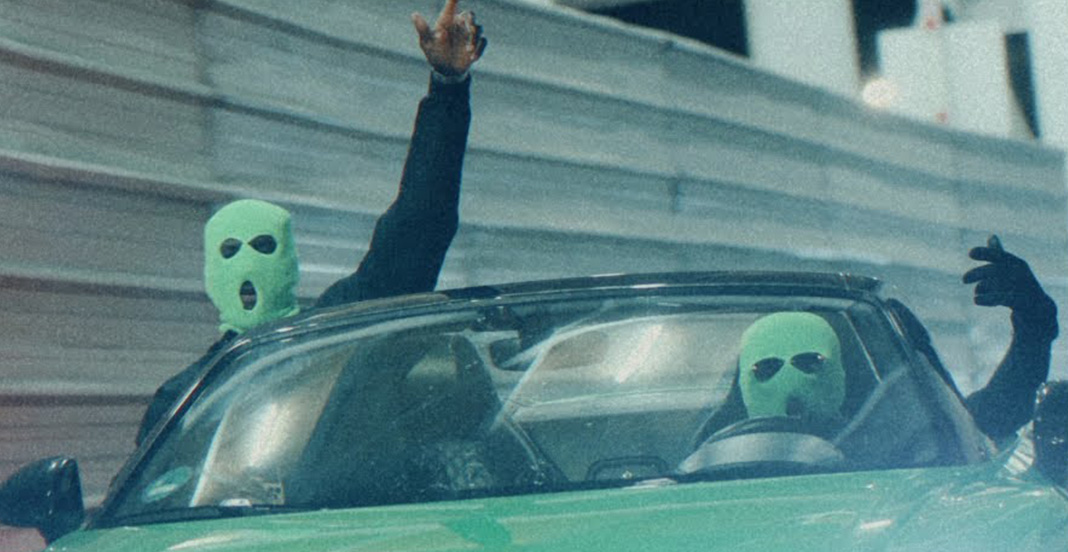Sevran is not far from Montfermeil. Victor Hugo’s “Les Misérables” and Ladj Ly thrive within this sprawling enclosure. Before becoming the capital of French Rap, akin to a certain “Bâtiment VII,” Sevran was a “No Man’s Land” that often fueled the paranoia of sensationalist journalists, who made it the subject of their macabre studies.
Sevran, victim of journalists?
During a visit to the neighborhood in 2015, with the former player of NewCastle, Wesley Baheng, who has become a highly active member of the community, we witnessed the damage in Sevran. Fikass confided in us, saying, “You see, there is nothing here.”
It is no coincidence that Stéphane Gatignon, the Green Party mayor of Sevran, resigned in 2018 to protest against the lack of resources allocated to his city. During his term, the mayor had to face several major controversies. In 2016, Gilles Kepel, an historian specializing in Islam, referred to Sevran as the French Molenbeek. According to the academic, who was invited to TF1’s news broadcast, the French city had become the epicenter of Islamist terrorism in France. In 2017, France 2’s news program featured a segment on the “Jockey Club.” According to the journalists, this bar in Sevran was forbidden to women. A year later, a representative from the channel admitted to “Le Monde” that there had been a “bug.”
Yes, until very recently, Sevran was known for all the wrong reasons. Even the TV show “Zone Interdite” produced a highly controversial segment about the city, featuring Bernard de la Villardière, who completely lost control in front of the locals. The video caused a scandal.
The city arouses many fantasies, and the anxieties of the French tend to crystallize around this distant suburb, which some claim to be Islamized and others describe as a giant furnace. It is in the midst of this immense mess that Trap music will emerge in Sevran.
Yazou: The Pioneer!
In the early 2000s, the first rapper from Sevran to make waves was a man named Yazou. Hailing from Sevran-Beaudotte, he was heavily influenced by Lunatik, ATK, IAM, and NTM. These rappers formed the cultural exception of French Rap for years, emphasizing the quality of their lyrics, as when ATK proclaimed, “Poverty and Fortune only cross paths like the sun and the moon, never meeting.” At the age of 14, he joined the group “Attentat Verbal” with rappers from Sevran and Aulnay Sous Bois. However, he abandoned the microphone, caught up in the harsh reality of life.
It was in 2005, during the unrest following the deaths of Zyed and Bouna, that events propelled Yazou into Rap. Faced with the magnitude of injustice, the rapper wrote the track “Nos Vies” (Our Lives), a true neighborhood chronicle. Its sociological significance is often underestimated.
His latest album “Jusqu’ici tout va bien” (So Far, So Good), a grand classic of French rap, also harbors the seeds of the new wave of rappers about to unleash themselves onto the rap scene, including Youssoupha, Alkpote, Seth Gueko, and many others.
Kaaris discovers “Or Noir” in Sevran
It all begins in 2013 when the Trap movement, originating from Atlanta’s Dirty South, already gains popularity in the USA with artists like Gucci Mane, Migos, and many others. In the US, the Trap virus takes hold of the entire music industry. In France, Trap, known to be “simpler” than the rap of the early 2000s, raises skepticism among the “veteran” rap elites. The lyrics of Trap, considered more minimalist, as well as the flow facilitated by the “discontinuous and broken” rhythm of Trap, become the main target of criticism.
In France, a highly talented producer named Therapy and his protégé Kaaris discover “Or Noir” (Black Gold) in the arid underground of Sevran. After creating a buzz with “Zoo,” the founder announces and unveils one of the greatest classics of French rap, “Or Noir.”
Each track announced by Therapy, with his motto “Back On The Future,” is as dark as it is haunting. Other producers like Double X participate in the project. There is less violin in the beats and more sharp piano notes. The discontinuity of the rhythm eventually creates a true breath of fresh air. The neighborhoods adore Trap. With K2A’s lyrical talent, a true poetic scatophile, “Or Noir” establishes Trap in Sevran.
To conclude the show, the rapper from Sevran collaborates with Booba on the massive features “Kalash” and “LEJ.” Even though the rappers are more than detrimental to each other today, between these two revered titans of French Rap, the track “Kalash” propelled Kaaris to the summit. The striking force of the DUC (Booba) cannot be overlooked.
After “Or Noir,” a whole series of rappers will venture into this subgenre of rap. Starting from 2013, the golden age of Trap begins in France. A first generation of rappers will follow Kaaris in his ascent.
The rising stars: Kalash Criminel, Ixzo, and 13 Block
Ixzo and Kalash Criminel are two artists who will emerge shortly after Kaaris. Ixzo is also from Sevran. The rapper spends the early part of his career collaborating on numerous features, such as with Gradur on “On n’est pas tout seul” (We’re Not Alone). Artistically, Ixzo goes even further than Kaaris as he popularizes Drill music in France. Today, the Drill movement is at its peak in France and has gained a significant number of followers, especially around “Bâtiment VII” (Building VII). According to information gathered by “Interlude,” Koba LaD himself was supposed to collaborate with the late Pop Smoke, who popularized Drill in the USA.
The “Molly” track by Ixzo, which truly launches Drill music for the rapper, was unveiled 4 years ago. He starts off at a furious pace, stating, “I didn’t wait to be validated to make myself heard.” And on the instrumental production, we always find the formidable “Double X.”
Kalash Criminel, the king of the “Sauvages” (Savages), is also a pure product of Sevran. The career of this young Congolese-origin artist wearing a balaclava skyrocketed quickly. It must be said that Kalash is a worthy representative of the Trap wave in Sevran. It is primarily through his explosive energy and lyrical outbursts that he imposes his wildness everywhere.
Behind the apparent simplicity of their words, there is also a true artistic and political commitment. The rapper, close to his Congolese origins, expresses his strong criticism of Francafrique in the latest installment of “Braquage à l’Africaine” (African Heist) several weeks ago. He narrates the experiences of the streets with rare authenticity.
13 Block is an institution in Sevran. Since their beginnings, led by their charismatic manager Falcao, they alone represent the rage of Sevran. Trap and Drill music serve as a means for the barricaded youth in Sevran to express themselves amidst the jeers of certain press outlets. In both content and form, the group from Sevran embraces the codes of Trap music with added aggressiveness, rage, and the energy of a youth that cannot be extinguished. Strangely close to Booba, while Kaaris has already made his mark in this domain, the group also exemplifies the divisions and clans within the Sevran Rap scene. They recently released the album “BLO.”
Da Uzi, Maes, Benab: They bring up the rear
When Da Uzi, Maes, and Benab enter the rap scene, Sevran is already one of the capitals of French rap. Maes is the first of the three to break through. With “Pure,” he achieves a platinum record. The rapper doesn’t heavily delve into Trap.
In his first solo album, Maes particularly favors slow bpm, somewhat hazy productions, and a flow that oscillates between singing and rapping. Maes unapologetically embraces Trap in Sevran. Although in his latest album, “Les Derniers Salopards” (The Last Bastards), which went platinum in a month, he tries his hand at Trap music on tracks like “Elvira.” His primary style remains close to what is called urban song. It carries a touch of poetry, but a poetry that emanates from lived experiences and the streets. Who better than a rapper from Sevran to narrate the stories of the streets, their delights, disillusionments, and the human drama that unfolds before our eyes? And Maes, like a certain Kaaris, was initially propelled by a certain Booba on the track “Madrina” from his first project, which provided a definite boost to his career.
Da Uzi, with “Mexico” and especially “Architecte,” puts an end to the dominance of Trap in Sevran. Da Uzi’s second project is a complete album where the rapper alternates between aggressive tracks, urban songs, and even club-style tracks. It’s no coincidence that Kaaris himself, since the album “Le bruit de mon âme” (The Noise of My Soul), has also embraced new vibes, moving away from his purely Trap-oriented first project.
Da Uzi even invents a unique style with vocal variations within his tracks, reminiscent of Niska since “Commando.” Da Uzi’s success is impressive; even during the confinement period in France, he achieves astonishing numbers, with nearly 5,000 units sold in the Mid Week charts. One can recall the line from Maes in the track “Le dire” (To Say) on Da Uzi’s album: “We met in the gutter, we’ll meet again at the top.”
Sevran without complexes: Benab, Imen Es, Dabs
Sevran is not limited to hardcore and gangsta rappers! The latest generation of rappers, Benab, Imen Es, and Dabs, emphasize singing and melody. Just like Kaaris, who has evolved over time, and his successors, the capital of the 93 (Seine-Saint-Denis department) has followed the evolutions of Rap in general. Today, urban music is more than ever at the top of the charts and represents an open genre. And Sevran has understood this.
Benab never misses an opportunity to pay tribute to the city where he grew up. The artist is more of a singer than a rapper, just like Imen Es, who is also making a career in urban music. Benab and Imen Es are already carrying the torch of the next generation in Sevran. And their music has nothing to do with the “Or Noir” (Black Gold) that flowed in Sevran, which allowed the city to break free from the grip of sensationalist journalists in search of thrills. Just like Dabs, the Franco-Malian artist, they represent a generation without complexes. No, Sevran is not a laboratory of crime and Islamism, and today the city has become the nerve center of a music that transcends borders, even if they are barricaded. Whether we like it or not, these artists are now representatives of “French chanson” (French song).


